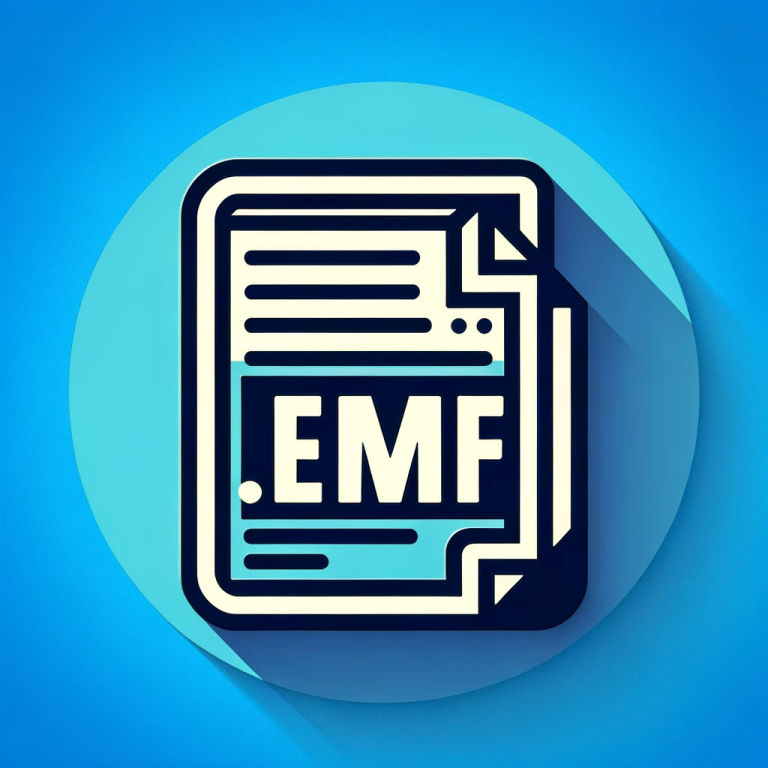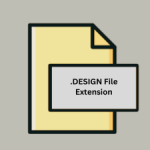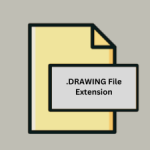.EMF File Extension

Enhanced Windows Metafile
| Developer | Microsoft |
| Popularity | |
| Category | Vector Image Files |
| Format | .EMF |
| Cross Platform | Update Soon |
What is an EMF file?
Enhanced Windows Metafile (.EMF) is a file format developed by Microsoft. It belongs to the category of vector image files, which means that it stores graphics as a set of mathematical instructions rather than a collection of pixels.
These instructions define shapes, lines, colors, and other elements, making .EMF files highly scalable without loss of quality.
EMF files are primarily used for storing vector graphics, which are ideal for various applications, including illustrations, diagrams, logos, and more.
Due to their scalability and compact size, .EMF files are commonly used in the fields of graphic design, desktop publishing, and printing.
More Information.
EMF files made their debut with Windows 3.0 in 1990. They were designed to be a more versatile and capable successor to the .WMF format.
One of the key improvements was support for 32-bit color depth, allowing for more vibrant and detailed graphics.
.EMF files introduced better support for transparency and anti-aliasing, resulting in smoother and more realistic graphics.
The initial purpose of .EMF files was to provide a standardized format for storing vector graphics that could be easily displayed and printed on Windows-based systems.
They were widely adopted by software developers and graphic designers for creating graphics that could be seamlessly integrated into Windows applications.
Origin Of This File.
The origin of the .EMF file format can be traced back to the early days of Windows operating systems. It was introduced by Microsoft as an enhanced version of the older Windows Metafile (.WMF) format.
The primary motivation behind the development of .EMF files was to provide better support for 32-bit Windows systems and to overcome some limitations of the older .WMF format.
File Structure Technical Specification.
EMF files consist of a structured format that contains a series of records, each describing a specific element of the graphics. These records include commands to draw lines, shapes, text, and more. The structure of an EMF file allows for efficient rendering and manipulation of vector graphics.
Some of the key technical specifications and features of EMF files include:
- Scalability: EMF files can be resized without loss of quality, making them suitable for both small icons and large posters.
- Compression: EMF files use a form of compression, known as run-length encoding (RLE), to reduce file size while maintaining image quality.
- Transparency: EMF files support transparent backgrounds and alpha channels, allowing for the creation of images with complex, non-rectangular shapes.
- 32-Bit Color: EMF files support millions of colors (32-bit color depth), ensuring accurate representation of color gradients and shades.
- Text Support: EMF files can store text as vector-based characters, ensuring that text remains sharp and legible at any size.
- Compatibility: EMF files are compatible with a wide range of Windows-based software applications, including Microsoft Office, Adobe Illustrator, and CorelDRAW.
How to Convert the File?
1. On Windows:
Using Built-in Tools:
- Open the .EMF file with a default viewer or application (e.g., Windows Photo Viewer).
- Use the “Save As” or “Export” option to choose a different format such as JPEG, PNG, or GIF.
Using Microsoft Office:
- Open Microsoft Word, PowerPoint, or Publisher.
- Insert the .EMF file into your document.
- Right-click the inserted image and choose “Save as Picture” to save it in various formats.
Using Graphic Design Software: Adobe Illustrator and CorelDRAW, popular graphic design tools on Windows, can open .EMF files and export them to various formats.
2. On macOS:
Adobe Illustrator (Paid): Adobe Illustrator is available for macOS and can open .EMF files for editing and conversion to other formats.
Inkscape (Free and Open Source): Inkscape is a free, open-source vector graphics editor that is compatible with macOS. You can use it to open .EMF files and convert them to different formats.
3. On Linux:
Inkscape (Free and Open Source): Inkscape is available on Linux and is an excellent choice for opening and converting .EMF files.
LibreOffice Draw (Free and Open Source): LibreOffice, a free office suite available for Linux, includes LibreOffice Draw. This application can import and edit .EMF files.
Online Converters: If you prefer a web-based solution, several online file conversion services, such as CloudConvert and Zamzar, allow you to upload .EMF files and convert them to different formats.
Wine (Windows Emulation): If you are using Wine, a compatibility layer that allows running Windows applications on Linux, you can run Windows graphic design software to open and convert .EMF files.
Advantages And Disadvantages.
Advantages:
- Scalability: EMF files can be resized without losing quality, making them ideal for both small icons and large print materials.
- Compact Size: EMF files are relatively small in size compared to bitmap images, which can help save storage space.
- Vector Graphics: They store graphics as mathematical instructions, ensuring sharp and precise rendering at any resolution.
- Transparent Backgrounds: EMF files support transparent backgrounds, allowing for the creation of images with complex, non-rectangular shapes.
- Compatibility: EMF files are compatible with a wide range of Windows-based software applications, making them versatile for various uses.
Disadvantages:
- Limited Cross-Platform Compatibility: EMF files are primarily designed for Windows systems, which may pose compatibility issues when working on non-Windows platforms.
- Complex Editing: While vector graphics are highly versatile, they can be more challenging to edit for beginners compared to bitmap graphics.
- Limited 3D Graphics Support: EMF files are primarily 2D vector graphics, so they may not be suitable for complex 3D graphics or modeling.
How to Open EMF?
Open In Windows
- Built-in Viewer: On Windows, .EMF files can be opened with the built-in viewer. Simply double-click the .EMF file, and it should open in the default viewer or application.
- Microsoft Office: .EMF files can be opened in Microsoft Office applications like Word, PowerPoint, or Publisher. You can insert the .EMF file into a document in these applications.
- Graphic Design Software: Professional graphic design software such as Adobe Illustrator and CorelDRAW can open and edit .EMF files.
Open In Linux
- Inkscape: Inkscape, a free and open-source vector graphics editor, is compatible with Linux. You can open .EMF files in Inkscape for viewing and editing.
- LibreOffice Draw: LibreOffice Draw, part of the LibreOffice office suite, is available on Linux and can open .EMF files.
- Wine (Windows Emulation): If you are using Wine, a compatibility layer for running Windows applications on Linux, you can run Windows graphic design software like Adobe Illustrator (if compatible) to open .EMF files.
Open In MAC
- Adobe Illustrator (macOS – Paid): Adobe Illustrator is available for macOS and can open .EMF files for viewing and editing. Open Adobe Illustrator and use “File” > “Open” to select and view .EMF files.
- Inkscape (macOS – Free and Open Source): You can install Inkscape on macOS and use it to open and view .EMF files. Launch Inkscape and go to “File” > “Open” to select .EMF files.
Open In Android
- Inkscape (Android – Free and Open Source): Inkscape is available as an experimental version for Android. You can install it from the Google Play Store. Keep in mind that working with .EMF files on a mobile device may have limitations due to screen size and performance.
Open In IOS
- Third-Party Apps (iOS): There are third-party apps available on the App Store that claim to support .EMF files. These apps may vary in terms of functionality and compatibility. You can search for them on the App Store and choose the one that suits your needs.
Open in Others
- Web-Based Viewers (Online): There are online services and web-based viewers that can display .EMF files without requiring any software installation. You can search for “Online EMF Viewer” in your preferred web browser to find such services.













